#homophily
Text
The Dark Side of Social Media: Unveiling the Dangers of Homophily

In today's digital age, social media platforms have become integral parts of our lives, connecting us with others around the world. However, amidst the allure of connectivity, there lies a darker side to social media—one that perpetuates homophily, or the tendency for individuals to associate with others who share similar traits or interests. In this blog post, we'll explore the negative aspects of homophily in social media and its potential risks.
Factors Contributing to Homophily:
Homophily, the phenomenon where individuals with similar characteristics are drawn to one another, has long been a subject of study in social network research. As McPherson, Smith-Lovin, and Cook (2001) elucidate, "the idea that similarity breeds connection has been a major theme in research on social networks, both formally and informally, for almost half a century."
The Role of Social Network Services:
In their analysis of social network services, Lee and Ahn (2012) dive into the homophily effect, noting that "individuals with similar characteristics tend to be attracted to one another and form connections." This underscores the pervasive nature of homophily in shaping social interactions online.
Risks of Homophily in Social Media:
While homophily may seem innocuous at first glance, it can exacerbate existing societal divisions and perpetuate echo chambers, where individuals are only exposed to viewpoints that mirror their own. This can lead to polarization, as individuals become increasingly isolated within their ideological bubbles.
Preventing the Negative Effects:
To mitigate the negative effects of homophily, it's crucial to actively seek out diverse perspectives, engage in respectful dialogue with those who hold different viewpoints, and critically evaluate the information we encounter online. By cultivating a sense of curiosity and open-mindedness, we can combat the harmful consequences of homophily in social media.
In conclusion, while social media has the power to connect us in unprecedented ways, we must be cognizant of its potential pitfalls. By understanding and addressing the negative aspects of homophily, we can foster a more inclusive and diverse online community.
References:
Lee, E., & Ahn, J. (2012). An analysis of homophily effect on social network service. Lecture Notes in Computer Science, 7235, 245-252.
McPherson, M., Smith-Lovin, L., & Cook, J. M. (2001). Birds of a feather: Homophily in social networks. Annual Review of Sociology, 27(1), 415-444.
#social media#homophily#echo chambers#online community#Diversity inclusion#social networks#digital age#internet culture#online dialogue#Openmindness
2 notes
·
View notes
Text
The Big 3: Understanding Homophily
Homophily, what is it? Do you know that we all are a part of homophily every time that we are on social media or heather at work. This basically separates us based on our interests and other things in common. It can be pretty hard not to condone in and could be a form of prejudice. Watch this video and get educated on what is all around us.
youtube
1 note
·
View note
Text

The Social Ties That Bind Us
Social Media Connections
Since we frequently socialize with and hear from people that are similar to us on social media, it significantly affects the enjoyment we receive from it. Homophily, which means "love of the same," is the term for this phenomena (McPherson et al., 2001). De Choudhury (2011) has demonstrated on Twitter that several forms of homophily are applicable to various user groups. For instance, regular users with about equal numbers of followers and followers have location and emotion homophily, meaning they typically react similarly and live and work close to one another. https://www.tumblr.com/wendys84-blog/743892134467436544/my-ig-connection?source=share
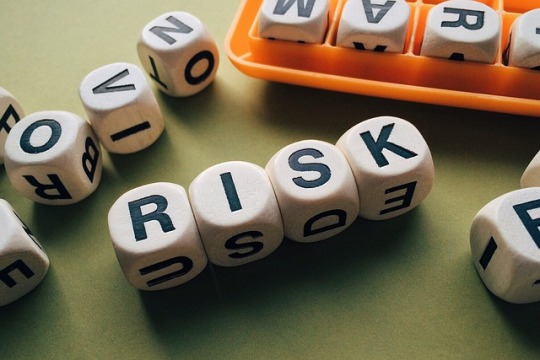
Risks of Homophily and Social Media
Along with the benefits of social media use researchers have also explored the risks and negative impact it has on users. Malak et al (2022) conducted a study that identified a correlation between collegiate mental health disorders and social media use. The main issue observed was in the obsessive use of social media. College students obsessed with these platforms exhibited heighted stress and were depressed. Students who specifically used the platform Facebook showed more of these negative effects. Data results revealed that the stressors were linked to peer pressure and having to share personal information on user profiles. Depression amongst this group was high as well because users felt a sense of hopelessness and feeling of disconnection. With homophily large groups with like minded thoughts can spread negativity and target other users. Some negative outcomes of this phenomena are cyberbullying, hate speech, and religious/political extremism.

Preventing Potential Risks
One psychological benefit to using social media is the boost it has on prosocial behaviors (when following accounts/profiles that spread positivity and are openminded). Prosocial behavior shows empathy, interacting with individuals and society in a healthy way, and social motivation (University of Texas at Austin, 2024). According to Bhadra and Kumar (2023) social media is a key role in nourishing prosocial behavior in users. Their research results exhibited that social media aided in the following: search for information, the development of individuality, goal setting, and social interaction. Their data shows that people are prone to act prosocial are more positive, have good mental balance, and are healthier physically. These positive effects of prosocial behavior due to social media use leads to longer life.
References
Bhadra, S. & Kumar, S. (2023, June). Impact of Social Media on Forming Individual’s Prosocial Behavior and Related Challenges among Youths in College. Indian Journal of Social Psychiatry, 39(2). Retrieved from
De Choudhury, M. (2011). Tie Formation on Twitter: Homophily and Structure of Egocentric Networks. SocialCom/PASSAT, 465–470.
Malak et al. (2022). Correlation between psychological factors, academic
performance and social media addiction: model-based testing. Behaviour & Information Technology, 41(8). Retrieved from
McPherson, M., Smith-Lovin, L., & Cook, J. M. (2001). Birds of a Feather: Homophily in Social Networks. Annual review of sociology, 27, 415–444.
0 notes
Text
"Homophily in the Age of Algorithms: Navigating the Dark Side of Social Media Connections"

Understanding Social Connection and Homophily
The connection on social media is strongly influenced by homophily, shaped by factors like algorithmic personalization, filter bubbles, similarity attraction, online communities, and easy interaction. Algorithms create echo chambers, limiting exposure to diverse views, while filter bubbles constrain users within information aligned with their existing beliefs. Human inclination toward connecting with like-minded individuals and the ease of interaction fosters homophilous networks. Acknowledging these factors is vital for users to navigate social media responsibly and promote a more diverse and inclusive online social experience. In a prior blog post, we explored the elements shaping the sense of connection in social media and the rise of homophily. Click here to revisit that post.
Amplifying Homophily: The Risks of Algorithms and Cognitive Biases in Algorithmic Echo Chambers
Algorithms and cognitive biases wield substantial influence on social media, reinforcing homophily and deepening users' isolation by customizing content to align with existing beliefs. These algorithms inadvertently construct echo chambers, narrowing perspectives and intensifying cognitive biases. The heightened homophily not only poses significant risks like cyberbullying, hate speech, and political extremism but also opens the door to potential radicalization, as algorithm-driven content recommendations may guide users towards extremist ideologies, isolating them from diverse viewpoints and potentially resulting in real-world consequences such as violence or terrorism. Recognizing and addressing these risks is essential for cultivating a healthier and more inclusive digital environment. Simultaneously, this combined impact of algorithms and cognitive biases shapes a digital landscape where users encounter fewer diverse opinions, fostering a sense of isolation within ideological bubbles on social media.
The LGBTQ+ community's experience on social media reflects the intricate interplay of algorithms and cognitive biases. While these mechanisms can enhance connection and visibility, challenges emerge, including the perpetuation of stereotypes and privacy concerns related to targeted advertising. Unintended consequences such as discrimination, censorship, and online harassment further complicate the landscape. Achieving a balance that prioritizes inclusivity, transparency in algorithms, and sensitivity training is crucial for creating and maintaining a positive and supportive online space for the LGBTQ+ community.
Navigating the Risks - Constructive Steps on Cultivating Digital Well-being: Strategies for Social Media Users
To mitigate the potential risks associated with social media use, individuals can take proactive and constructive steps, fostering a healthier and more inclusive online experience:
Maintain a Sense of Curiosity: Cultivating curiosity helps users actively seek out diverse perspectives and information. Encouraging open-minded exploration of content beyond one's comfort zone promotes a more comprehensive understanding of various viewpoints.
Consider Alternative Perspectives: Actively engaging with content that challenges or differs from one's own beliefs is crucial. By seeking out and listening to alternative perspectives, users can broaden their understanding and contribute to a more diverse and open online discourse.
Fact-Checking: Verifying information before sharing it is essential in preventing the spread of misinformation. Encouraging a culture of fact-checking promotes accuracy and responsible information sharing, contributing to a more informed and reliable digital space.
Cultivate Diversity Consciousness: Being aware of the importance of diversity and actively seeking out a variety of voices in one's online network is key. Following individuals with different backgrounds, experiences, and viewpoints contributes to a more diverse and inclusive social media environment.
Open-Mindedness: Nurturing an open-minded approach to discussions and debates is fundamental. Being receptive to new ideas, even if they challenge existing beliefs, promotes constructive dialogue and helps break down echo chambers that can lead to homophily.
By incorporating these constructive steps into their social media practices, users can play a role in preventing the potential risks associated with algorithms and cognitive biases. These actions contribute to a more informed, diverse, and open online community, fostering a positive digital environment for users to connect and engage. In the complex landscape of social media, understanding the negative aspects of homophily is crucial. By acknowledging the role of algorithms and cognitive biases, users can empower themselves to navigate these challenges responsibly. Taking proactive and constructive steps, as outlined in this post, can contribute to a healthier and more diverse online social environment.
References
Jones, M. H., Hackel, T. S., & Gross, R. A. (2022). The homophily and centrality of LGBQ youth: A new story? Social Psychology of Education, 25(5), 1157-1175. https://doi.org/10.1007/s11218-022-09720-8
Passe, J., Drake, C., & Mayger, L. (2018). Homophily, echo chambers, & selective exposure in social networks: What should civic educators do? Journal of Social Studies Research, 42(3), 261-271. https://doi.org/10.1016/j.jssr.2017.08.001
Kaiser, J., & Rauchfleisch, A. (2020). Birds of a feather get recommended together: Algorithmic homophily in YouTube’s channel recommendations in the United States and Germany. Social Media + Society, 6(4), 205630512096991. https://doi.org/10.1177/2056305120969914
Gao, Y., Liu, F., & Gao, L. (2023). Echo chamber effects on short video platforms. Scientific Reports, 13(1), 6282-6282. https://doi.org/10.1038/s41598-023-33370-1
0 notes
Text
Isis can’t be that bad if they like pineapple on their pizza too. Right??

Defining homophily is being attracted to or seeking out individuals who are like yourself or themselves. Some factors of feeling connected with social media networking. Finding those who have similar tastes and then using social media as a means of communication to chat, share ideas and comments, aid one another, even making social contacts. Support and community building, forming a support group via social media that offers comfort, advice, and camaraderie to those facing similar challenges in life. Last is the ease of communication, no longer do you have to travel to places and meet those with similarities. Social media makes communication with others easier with the push and click of a button, regardless of time zone or distance.

Algorithms and cognitive biases can intensify homophily and contribute to isolation. With social media algorithms, which is a set of data on a platform that watches and records your searches, interests, and follows where you go and like via social media. TikTok’s algorithms send content to your “for your page” feed. Here you view videos and such that the application may think you like and or share similarities with. One cognitive bias that impacts greatly with our social media usage is confirmation bias, this is our way of viewing and engaging others who share the same facts, beliefs, and news that fit our own beliefs. The risk is that we isolate ourselves so much from the outside world and as well as information that may oppose our own view. Pushing more and more away from other viewpoints, we close off our minds to anything that doesn’t align with our beliefs (Nikolopoulou, 2022). This could though pose risks such as radicalization or terrorists, first a person may join a group or even identifies with a group who share same beliefs or views. You then find yourself accepting the beliefs and more that are held by the group. The next step after that would be indoctrination, being accepted into the group and performing an act or display that gets you into the group and the recognition of the group. Last would-be performing terrorism with the group. All that can transpire from wanting to feel accepted or finding peace in people and places that you find align with your beliefs and views (ACT, n.d.).

Keep yourself protected, a step you can take to prevent wrongdoings or becoming to isolated from truth would be verifying your information. Always check your facts, before you share content or create and act on information you have gathered, check it out. Check to see if your source of information is credible or not. Span out and do more research. Also check out those who your following or getting your information from on your social media, if you find out the page you follow gives false information or leaves out information that is relevant, just to make click bate and block or unfollow them all together.
References:
Allcot, H. & Gentzkow, M. (2017). Social Media and Fake News in the 2016 Election.
https://www.aeaweb.org/articles?id=10.1257/jep.31.2.211
ACT. (n.d.). What are the stages of radicalization.
https://actearly.uk/radicalisation/the-stages/
Nikolopoulou. K. (2022, November 11). What Is Cognitive Bias? | Definition, Types & Examples.
https://www.scribbr.com/research-bias/cognitive-bias/
0 notes
Text
You Can't Tweet With Us
As I discussed last week, homophily is very prevalent in social media. See link: https://www.tumblr.com/natashapsych/716091758189182976/are-you-gay-too?source=share The Oxford dictionary defines homophily as the habit of seeking out other people or groups that are similar to yourself. Many studies have concluded that homophily has increased in social media and has been very beneficial to minority groups (Khanam, et al. 2020)
While homophily sounds like it creates endless positive outcomes by providing connection to those similar to use, it can also lead to problems. An article by Cornell University explains that homophily can lead to isolation, specifically in minority groups. When large majority groups (such as white men) engage in homophily, it contributes to a huge result in isolation to those who do not fall into that category (Cornell University, 2023). When groups are engaging in homophily, they often do not interact with each other (Cornell University, 2023). This phenomenon may result in more implicit bias. Implicit bias is defined by the American Psychological Association as the unconscious negative attitude toward another social group (APA, n.d.)
While using social media, it is important that we look outside our designated social group. This can be done by considering different perspectives by purposely looking for posts outside of our tailored algorithm. When presented with information, it is important that we check the credibility by using scholarly and professional sources.
References
American Psychological Association (n.d.) Implicit Bias. https://www.apa.org/topics/implicit-bias
Cornell University. (2023). How Homophily Leads to Isolation of Minorities

0 notes
Text
Week 3
Week 3 social media discussion The definition of homophily is as follows: The tendency for people to seek our or be attracted to those who are similar to themselves. This concept can be highly applicable to both online and in person settings. The best, personal explanation of this phenomenon is my job. Before working the job I have now, I have never been able to become close friends with my coworkers. With the job I have now as an RBT, most people have to have a specific personality to work this challenging job, and it makes a lot of sense that I would be so close with my coworkers because we are all so similar and have the same mannerisms. I really love my job and I’m glad we have some aspect of “homophily
0 notes
Text
No Homophily

Social media wants to tell you what you want to hear. The algorithm is built for precisely that. This keeps the consumer engaged because social media is now validating everything they already believe. However, is this algorithm closing the door to opened mindedness? Speaking from my own perspective, I can tell that the videos I want to see are still always there. However, due to my large friend group, I still see opinions shared on social media that don't align with mine.
However, if I were to delete friends off my social media who disagree with my opinions, that's where problems start. Now I only see what I want to see. My mind is closing; all of my thoughts are validated, and I hear no other alternative, no other perspective, and now I'm in a dangerous position. I can say whatever I want, knowing that my new list of friends will validate me. This fine line of freedom to say whatever I want without repercussions can quickly turn to hateful radical one-sided opinions.
I can prevent that by keeping those with different opinions than me on my friend list as long as there are not hateful and one-sided. When a Political topic comes up, look into both perspectives and try to understand where both sides are coming from. Most importantly, fact-check everything. Social media content is not at all facts. It's people with accounts who are sharing their own opinions. Before voting or forming any opinion, it is crucial that you find a credible, non-bias source to get your information. Once your research is completed, then you can move forward with confidence in the facts. Let's not be the Anti-Hero by self-reflecting. It starts with us.
0 notes
Text
Everyday you learn something new...
What I learned
For me that new knowledge is that social media platforms utilize psychology way more than I anticipated. I ignorantly assumed that we all see the same things that are shared on social media until recently when I asked a friend if she had seen a Facebook post about some negativity surrounding a local establishment. She had no idea what I was referring too and said: "No girl, I only like positive posts so I mainly see positive things." It only took this class for me to realize that what she is saying is legit. When you "like" certain posts and news articles on Facebook, for example, the platform's algorithm will share more of that content with you. Social media uses psychology by encouraging homophily, or "love of the same" to help make connections between people virtually.
What I'm going to do
Equipped with this knowledge I am going to now "like" all the positive things. I want more positivity in my life and on my social media. I'm hoping that the more positive and uplifting posts I like, the more my accounts will share with me. I want to change my algorithm. I'm also going to continue to question why some products are shared with me and try not to get a complex as I continue to get ads for anti-aging and weight loss items. ;)

0 notes
Text
Promoting diversity in the lab
Promoting diversity in the lab
My definition of a ‘lab’ is simply a group of people who do the science in question — and people are a varied bunch, indeed. But I wager that most scientists would not necessarily give much dedicated thought to the diversity of the people in their lab, and instead probably focus more on obtaining the most qualified and cleverest people for the jobs that need doing.
For example, I have yet to…

View On WordPress
#bias#cultural diversity#equality#gender#gender bias#homophily#inequality#international#misogyny#multiculturism#science#sexism#subconscious bias#unconscious bias
0 notes
Text
...But Are The Similarities a Good Thing?

Factors That Contribute to Feeling Connected in Social Media and The Development of Homophily
A factor that contributes to the feeling of being connected in social media would be a person's interests. Social media typically pulls whatever a person researches and what posts they liked to help posts and pages that'll best fit that individual.
EXAMPLE: A year ago, I went through a phase where I was extremely interested in different types of hygiene, such as perfumes, soaps (bar and whipped), and body lotions/butters. I would like many posts from different small businesses and 'Bath and Body Works' Instagram posts and before I knew it, my explore page was filled with different hygiene posts including 'ShowerToks'. 'ShowerToks' are posts made by people about different scent combinations they showered with and what smell(s) would come about while using them.
How Algorithms and Cognitive Biases Can Intensify Homophily and Contribute to Isolation
Groups.
(Wang et al., 2010) There are different groups of people who like similar things but, if they come across a person or group of people who like things opposite (ex-political standings) from what they like then things may get a little combative. This is where the isolation comes into play.
EXAMPLE: Bullys. In a scenario, there are two kids who gain joy out of picking on smaller kids. These bullies become friends because they found something in common which could also contribute to them also isolating themselves since everyone else around doesn't like to partake in those types of activities.
Discuss Potential Risks of This Phenomenon in Social Media
This is typically generated in a person's comment section. An influencer can make one distasteful post whether they realize it or not, it really doesn't matter. Social Media comment sections have been known to be ruthless.
After entering the comment section and seeing how many people feel [negatively] the same way about the particular post, it's hard for a positive comment to get noticed. This isolates the other commenters that don't want to contribute to the negative feedback.
How to Prevent Potential Intensified Homophily Risks
To prevent potential posts like this would be hard. Everyone would have to follow the "If you have nothing nice to say then don't say anything at all," rule. Other ways for a person to stop something of this sort would be to turn off their comment sections, which a lot of celebrities and social media influencers do after a while.
Wang, X., Sirianni, A., Tang, S., Zheng, Z., & Fu, F. (2010). Public Discourse and Social Network Echo Chambers Driven by Socio-Cognitive Biases, 10. https://doi.org/https://doi.org/10.1103/PhysRevX.10.041042
0 notes
Text
Social Media and the Hierarchy of Needs
We Need Each Other

A well-known psychologist, Abraham Maslow, created the theory of the Hierarchy of Needs to help explain human motivation. This system was made up of five levels that you needed to achieve to reach your full potential (or as he put it, self-actualization). The third level of his Hierarchy is feeling loved or belonging. According to his theory, it is essential that we feel like we belong to a group (Myers & DeWall, 2020).
Social media helps us achieve that feeling of belonging. Social media allows us to connect with each other in groups based off of similar interests on many, many different platforms. This is especially interesting when you think about people who are introverts but still need to satisfy this need; studies have concluded that introverts use social media to have that feeling of belonging (Bianchi & Phillips, 2005).
Why is it Beneficial?
Elaborating on what I explained above, there have been studies that found social media sites fulfill this portion of the Hierarchy by connecting people with similar interests or even those that are in need of support (for example with grief or medical issues).
Homophily is our basic need to have similar interests to others. When a certain hashtag is trending on Twitter, or certain sounds are popular on TikTok, they go viral due to homophily. Everyone wants to be in on what's popular and enjoy that kind of connection.
The ALGORITHM
We all know about the Algorithm. We joke about social media companies listening in to our conversations to offer us more targeted ads. The algorithm developed by social media companies has been used to suggest people we should be friends with, products we might like to buy, and groups we may want to join. This also ties in to homophily.
References:
Bianchi, A., & Phillips, J. G. (2005). Psychological predictors of problem mobile phone use. CyberPsychology & Behavior, 8(1), 39–51. https://doi.org/10.1089/cpb.2005.8.39
Myers, D. G., & DeWall, C. N. (2020). Psychology (13th Edition). Macmillan Higher Education. https://bookshelf.vitalsource.com/books/9781319347970
Pelling, E. L., & White, K. M. (2009). The theory of planned behavior applied to young people's use of social networking web sites. CyberPsychology & Behavior, 12(6), 755–759. https://doi.org/10.1089/cpb.2009.0109
Walsh, S.P., White, K.M. and Young, R.M. (2009), The phone connection: A qualitative exploration of how belongingness and social identification relate to mobile phone use amongst Australian youth. J. Community. Appl. Soc. Psychol., 19: 225-240. https://doi-org.library.capella.edu/10.1002/casp.983
0 notes
Text
If "Birds of a feather flock together," which bird am I?
Numerous types of birds inhabit our beautiful planet: peacocks, mockingbirds, macaws, puffins, hummingbirds, eagles, and more. Each bird is unique in its location, plumage, eggs they hatch, and their respective bird communities. Regardless of bird species, their communities are outstanding to view, as they all stay by their fellow bird while they look for places to build nests or migrate across the globe.
After all, birds of a feather flock together!

Wait... Did you think I planned to spend this entire post discussing birds?

No, my friends, this is my Psychology of Social Media post for the current week - birds are not in the picture here! But why bring up birds in the first place?
It's all about Social Media, of course!!
Social media can do much for society as a whole, as well as for individual people. If you remember from last week, I mentioned what types of motivations people have throughout their lives and what can motivate people to use social media. Social interaction was listed as one of the motivations for using social media, but there's more to this topic than was previously discussed. Let's dive a bit further!
If you look closely at the numerous ways one can communicate on practically any social networking site, you'll find that it all boils down to creating a community. As humans are social creatures, we are motivated to build relationships and communities with one another. But what encourages us to build, find, or join a community online?
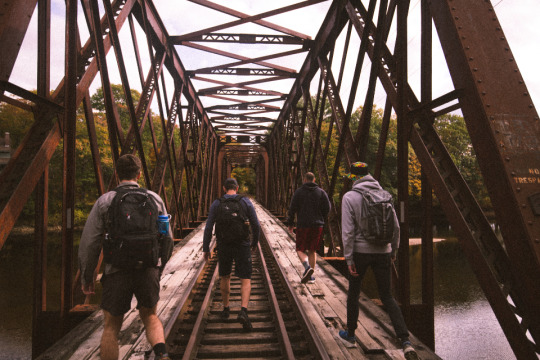
Kim, Wang, and Oh (2016) found that the collective need to belong greatly encouraged social media use among college students, stating that if they had a more significant amount of desire to need to belong in a community that enjoyed their presence, the greater the probability that they will turn to social media for more communication (Kim et al., 2016).
Wohn, Carr, and Hayes (2016) shared that perceived social support is essential to driving the motivations of social media users through likes/favorites, including the depth of the relationship shared by the users who like/favorite the posts significantly increases perceived social support (Wohn et al., 2016). This means the more a user connects with other like-minded users and creates/posts content that their fellow users would enjoy, the more likes/favorites they will receive, building that sense of perceived social support.
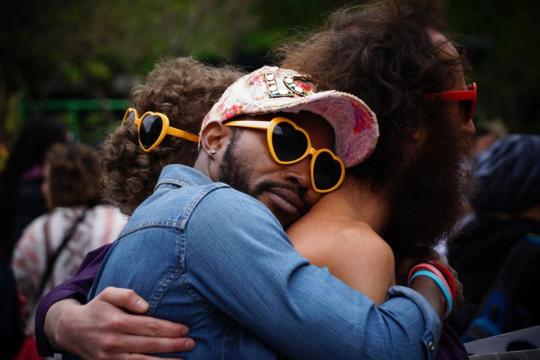
Have you ever heard of a term called homophily? No, it isn't a fancy term for the breakfast food known as grits nor a new evolution of humans. Homophily is the tendency to branch out to, or feel attracted towards, people who are similar to you. In other words... "birds of a feather flock together"! (See, I brought it back to birds. There was a reason for that introduction, after all!)
Figeac and Favre (2016) state that online conduct that is geared towards homophily can strengthen the internalized notion of certain relationships becoming enhanced (Figeac & Favre, 2016). In other words, people who continually seek out like-minded individuals through online communities feel a sense of "togetherness" as they interact more frequently through social media. There are many avenues that social media users can utilize to find that sense of community, including online groups (such as ones found on Facebook) and online forums (such as subreddits found on Reddit).

Put some rhythm on that Algorithm!
So, how do social networking sites encourage even further use? Through an algorithm, of course! No, an algorithm isn't one of America's vice presidents playing a beat on the drums (here's looking at you, Al Gore). Instead, an algorithm is actually a set of computer rules and calculations used by various social media platforms to consistently generate content for users to interact with.
When most people think of an algorithm, they think of TikTok, which is famously known for relying on an algorithm to continually churn out content for users to view and interact with. In fact, many users on TikTok joke about the type of content that commonly populates their "FYP" or For You Pages. In fact, I've noticed when my siblings and friends send me certain types of TikToks, I tend to see similar content floating through my own FYP.
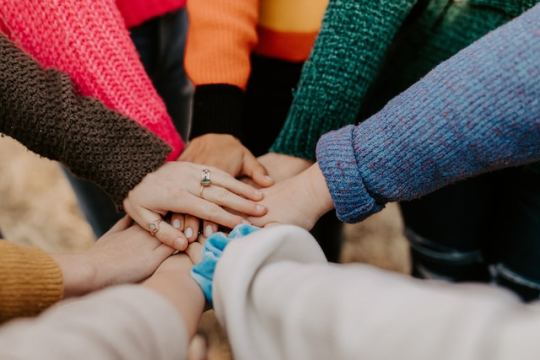
Homophily + Algorithm = ?
This means homophily and algorithms work together to encourage users to seek out like-minded individuals through online communities and continually view/share content that is geared toward those communities through social media. Something as small as sharing cute pet videos with colleagues who enjoy pets or something as significant as sharing politically charged content with friends within the same political spectrum can encourage continued social media use globally.
The number of online communities is vast. Some communities can easily blend together, whereas others stand out independently. No matter which online community you feel pulled towards, the algorithm will ensure you view similarly themed content, which will markedly increase your continued use of social media as a whole.
Happy algorithm surfing, everyone!
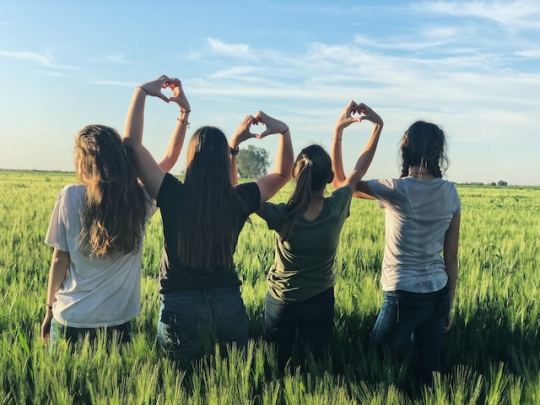
References
Kim Y., Wang Y., & Oh J. 2016. Digital Media Use and Social Engagement: How Social Media and Smartphone Use Influence Social Activities of College Students. Cyberpsychology, Behavior, and Social Networking. (19)4, 264-269.
Wohn D., Carr C. T., & Hayes, R. 2016. How Affective Is a “Like”?: The Effect of Paralinguistic Digital Affordances on Perceived Social Support. Cyberpsychology, Behavior, and Social Networking, 19(4), 562-566.
Figeac, J., & Favre, G. (2023). How behavioral homophily on social media influences the perception of tie-strengthening within young adults’ personal networks. New Media & Society., 25(8), 1971–1990.
Schroeder, J. E. (2021). Reinscribing gender: Social media, algorithms, bias. Journal of Marketing Management, 37(3-4), 376-378.
#psychology of social media class#homophily is fun for everyone#why are we so alike#flocks fly together
0 notes
Text
My IG Connection

Social Connection
The definition of social connection includes possibilities for sharing personal information, building relationships, and the feeling of belonging to a group or closeness to others. Social media use can help with the development and expression of social identities. By stimulating a sense of belonging, social media sharing activities including chatting, watching movies on TikTok with friends and family, and co-producing material have been shown to increase emotions of connectedness (Winstone et al., 2021).

Homophily in Social Media
According to McPherson et al. (2001) homophily is the tendency for similar individuals to associate with one another in social groupings and this is one of the key findings made by social scientists. Due to the fact that we frequently engage with and hear from like-minded individuals on social media, it significantly affects the value we derive from it. One benefit from this phenomenon is building real life friendships through these shared interests through social media interaction.
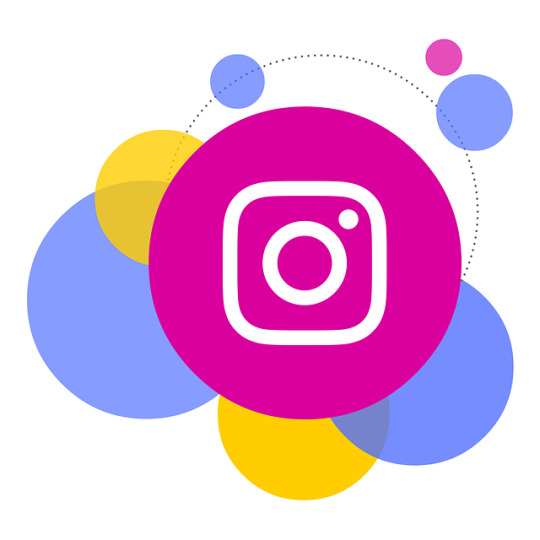
IG Algorithms
My favorite social media platform is Instagram (IG) and my feed is flooded with memes about coffee, anime edits (mostly Jujitsu Kaisen and my fav character from JJK, Gojo), and Bookstagram posts. Since these are the things, I research the most that’s what the IG algorithm will continue to add/suggest. I joke with my friends that IG amps up my book obsession because I have accounts promoting new books constantly. “It’s the IG algorithm, its why I keep buying more books!” I will say that I appreciate this benefit (homophily) because I have found a whole group of readers who are as dedicated to the reading genre I enjoy as I am. We share our excitement over new books, fun edits, recs, and reviews.
References
Winstone et al. (2021, September 24). Social media use and social connectedness among adolescents in the United Kingdom: a qualitative exploration of displacement and stimulation. BMC Public Health.
McPherson, M., Smith-Lovin, L., & Cook, J. M. (2001). Birds of a Feather: Homophily in Social Networks. Annual review of sociology, 27, 415–444.
0 notes
Text
The theory that Eric cared for Dylan more than Dylan cared for Eric is...wrong.
I have heard, every now and again, a theory that Dylan was Eric's best friend but Eric was not Dylan's best friend. Sue Klebold mentions this in her book by bringing up Dylan's closeness to friends like Nate Dykeman or Zack Heckler, but here's my take:
I think Dylan really wanted to be accepted; Eric wanted to be accepted too. Dylan's desperation for friendship allowed him to accept Eric and vice versa.
Truly, I don't think anybody saw the depth of their relationship because they didn't want anyone to. This is the same concept we can apply to the entire, what, year? That they spent plotting their attack.

When Eric and Dylan were arrested in January 1998, it was like the nail in their coffins. Eric would go on to write in his journal: "Isn’t America supposed to be the land of the free? How come, If I’m free, I can’t deprive a stupid fucking dumbshit from his possessions if he leaves them sitting in the front seat of his fucking van out in plain sight and in the middle of fucking nowhere on a Frifuckingday night. NATURAL SELECTION. Fucker should be shot."
Dylan fashioned his messages to Eric in the style of Doom books, going so far as to write multiple notes to him throughout the entire yearbook and drawing a Doom POV shotgun as an indicator to “continue [reading] where you see this.”
Upon the numerous pages he wrote, he drew pictures of fictional characters that Eric liked and quoted Eric’s own website posts back to him (Specifically writing: You know what I hate??? PEOPLE!! YEAA!!). He recounts his favorite memories over the last year: working together at Blackjack, smoking cigarettes together at Blackjack, lighting fires, and the last two 4th of July celebrations.
In the end of March 1998, Eric wrote in his planner that he still had movie plans with Dylan. This was at the same time that Dylan told Brooks about Eric’s website and threats.
In April 1998, Eric writes, "…sometime in April [1999] me and V will get revenge and kick natural selection up a few notches." This indicates their continued contact and their early planning of their attack on Columbine.
Dylan would write in Eric’s 1997-1998 yearbook: "We, the gods, will have so much fun w NBK!! Killing enemies, blowing up stuff, killing cops!! My wrath for January’s incident will be godlike."
As early as April 1998 Eric mentions “going NBK.”
Dylan was deeply connected to Zack especially, and took it really hard when Zack and Devon started dating. However, Dylan also laments over the fear of losing Eric too once Eric started casually seeing someone. He had the same fears of abandonment that he did for Zack as he did for Eric...but perhaps, to a lesser degree.
Eric and Dylan had achieved homophily. While both of them maintained their own separate peer groups, their relationship remained constant. The amount of time they spent together continued to mount, despite their closeness having a tendency to go unnoticed or be dismissed. In Sue’s book, the claim is made that Nate was Dylan’s closest friend. With this in mind, who did Dylan choose to sign up for every single class with? Who did he sit with in every class? Who did he wake up at 3:30AM with to get the best parking spots at school? Who did he routinely sneak out with every week? And lastly, who did he choose to die with?
579 notes
·
View notes
Text
Do You Orgasm Viewing My Content???

How does it feel taking time out of your day to open Instagram, go to my page, like a post, all because our similarities drive your brain? Why do we as humans decide to get lost for minutes to hours a day on social media? Does this really mean something to us or is it inconsequential? The psychology behind the urge to get on social media to view, like, and at times comment. This does matter, in fact we do this because it “it taps into some of the very elements that make us human, our addictions, desires, anxieties and joys” (Seiter, 2015)
Dopamine and oxytocin

Some of these factors that make us all feel connected over social media are part of what I was mentioned above by Courteny Seiter, the addictions, desires, anxieties, and joys. Our brains have a lot to do with our social media addiction in two major ways. The chemical release that happens while taking a gander through social media. Dopamine and Oxytocin, dopamine is usually tied to pleasure but is creating wants. The aspects of seeking, searching, and desire. The dopamine levels that are released are so strong that studies show that tweeting is harder to resist than a cigarette (2015). Oxytocin, the other chemical that gets released is tied to the feelings of empathy, love, generosity. People feel they can trust more people on social media. And that spending just 10 minutes on social media raises the oxytocin levels as much as 13%, this is the same as most people get on their wedding night.
Homophily
A concept in which like-minded people tend to interact with each other in social groups rather than with those who don’t have similar tastes. We as humans tend to migrate towards that in which we find similar interests. This coming into our social media usage, is where we find our feeds, us for you page content. You aren’t interested in, like, or follow those who have different views than yourself. No, you do the opposite because of the since of familiarity! Companies and individuals can tap into this homophily theory to the advantage of creating a customer bases off social media. Utilizing hashtags and locations to help sell products, an individual example would be using my wife. She loves southern country looks, the rustic and Aztec design works. All her Instagram is filled with different online stores that pop up on her feed due to the hashtag searches.
Algorithms
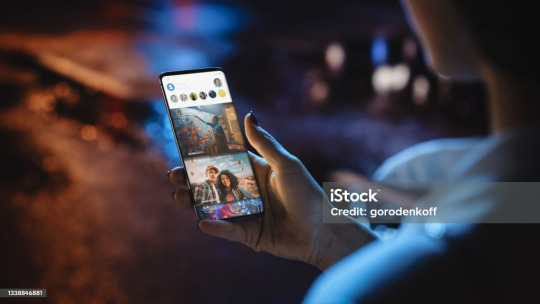
This is a what is used to give you your viewable content on whichever social media platform you are using. The set of rules and calculations that social media like that of Instagram uses to generate content aimed specifically at you. Once you create an Instagram page one of the first things it asks is what are things that interest you. This is the first process in its algorithm to give you the content that will keep you bewitched by your device. From there the things your search and the things you post are all tied into the algorithm that Instagram uses. The more you like a certain brand or content the more it pops up on your feed. You can use this as an advantage to grow your own business, name, or image (Singh, 2023).
References
Seiter, C. (2015). The Psychology of Social Media.
youtube
Singh, C. (2023, September 16). Understanding Social Media algorithm. [2023 Complete Guide]
0 notes